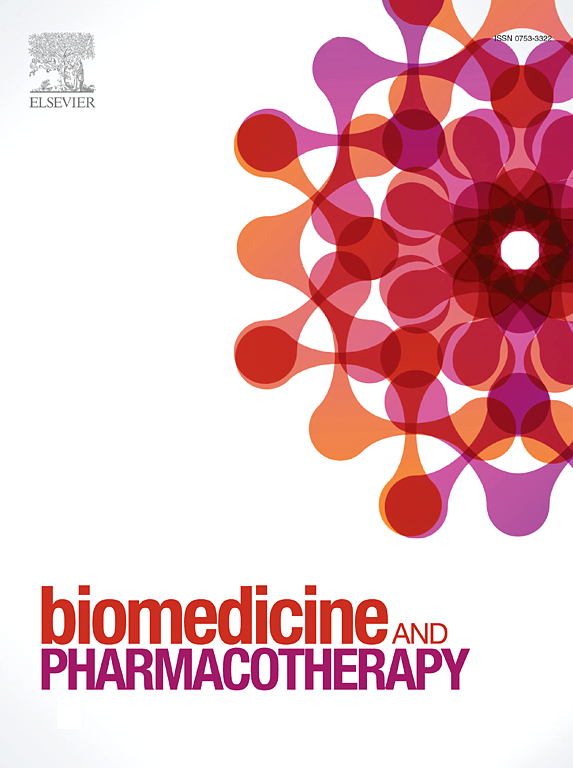Bone marrow tumor microenvironment profiling predicts distinct immunosuppressive phenotypes and immunotherapy potential in AML patients
IF 7.5
2区 医学
Q1 MEDICINE, RESEARCH & EXPERIMENTAL
引用次数: 0
Abstract
The immune landscape of acute myeloid leukemia (AML) is poorly understood, and its myeloid origins complicate the distinction between pathological and immunoregulatory components. We refined the AML microenvironment (AME) classification, demonstrating distinct immunophenotypes from AML lineages and maturation stages. We developed distinct 13-gene megakaryocytic/erythroid (MK/Ery) and 16-gene myelomonocytic/monocytic (ML/Mo) polygenic markers and validated them in adult and pediatric AML patient cohorts, including single-cell RNA-sequencing data. To identify immunoregulatory factors, the AME composition was predicted by the xCell algorithm, immune dysfunction was computed by TIDE, and differential gene expression analyses identified candidate genes. To validate our findings, we studied the effects of MK/Ery-like and ML/Mo-like AML cell lines on CD8⁺ T-cells/AML cells in co-culture assays, using models identified by Celligner matching AML patient blasts. Patients with high MK/Ery expression (MK/EryHigh) exhibited a dysfunctional microenvironment with increased pro-inflammatory cytokines, increased T-cell infiltration, and upregulated immune checkpoints, particularly CD274 (PD-L1). Single-cell RNA-seq confirmed that CD274 overexpression originated from malignant subclones with MK/Ery-like phenotypes. Conversely, AML with high ML/Mo expression (ML/MoHigh) displayed a T-cell-depleted niche enriched in myeloid-derived suppressive elements, including M2 macrophages, VISTA, and galectins. MK/Ery-like (e.g., OCI-M1, HEL) and ML/Mo-like (e.g., MUTZ3, MONO-MAC-1) cells suppressed T-cell proliferation in co-culture. Pharmacological PD-1/PD-L1 blockade with the small-molecule inhibitors BMS-1166 and BMS-1001 abrogated HEL-mediated T-cell proliferation inhibition. Transcriptomic data, single-cell analyses, and functional co-culture experiments reveal two AMEs: T–cell–rich yet dysfunctional vs. myeloid-driven and immunosuppressive. This refined categorization overcomes the traditional hot–cold classification to tailor future AML immunotherapies.
骨髓肿瘤微环境分析预测AML患者不同的免疫抑制表型和免疫治疗潜力
急性髓系白血病(AML)的免疫机制尚不清楚,其髓系起源使病理和免疫调节成分之间的区别复杂化。我们改进了AML微环境(AME)分类,展示了AML谱系和成熟阶段不同的免疫表型。我们开发了不同的13基因巨核细胞/红细胞(MK/Ery)和16基因骨髓单核细胞/单核细胞(ML/Mo)多基因标记,并在成人和儿童AML患者队列中验证了它们,包括单细胞rna测序数据。为了鉴定免疫调节因子,使用xCell算法预测AME组成,使用TIDE计算免疫功能障碍,并通过差异基因表达分析鉴定候选基因。为了验证我们的发现,我们在共培养实验中研究了MK/ ery样和ML/ mo样AML细胞系对CD8 + t细胞/AML细胞的影响,使用Celligner鉴定的模型匹配AML患者原细胞。MK/Ery高表达(MK/EryHigh)的患者表现出功能失调的微环境,促炎细胞因子增加,t细胞浸润增加,免疫检查点上调,特别是CD274 (PD-L1)。单细胞RNA-seq证实CD274过表达起源于MK/ ery样表型的恶性亚克隆。相反,ML/Mo高表达的AML (ML/MoHigh)表现出t细胞缺失的生态位,富含髓源性抑制因子,包括M2巨噬细胞、VISTA和凝集素。MK/ ry样细胞(如OCI-M1、HEL)和ML/ mo样细胞(如MUTZ3、MONO-MAC-1)在共培养中抑制t细胞增殖。用小分子抑制剂BMS-1166和BMS-1001阻断PD-1/PD-L1可消除hell介导的t细胞增殖抑制。转录组学数据、单细胞分析和功能共培养实验揭示了两种AMEs: t细胞丰富但功能失调vs.骨髓驱动和免疫抑制。这种精确的分类克服了传统的热-冷分类,以定制未来的AML免疫治疗。
本文章由计算机程序翻译,如有差异,请以英文原文为准。
求助全文
约1分钟内获得全文
求助全文
来源期刊
CiteScore
11.90
自引率
2.70%
发文量
1621
审稿时长
48 days
期刊介绍:
Biomedicine & Pharmacotherapy stands as a multidisciplinary journal, presenting a spectrum of original research reports, reviews, and communications in the realms of clinical and basic medicine, as well as pharmacology. The journal spans various fields, including Cancer, Nutriceutics, Neurodegenerative, Cardiac, and Infectious Diseases.

 求助内容:
求助内容: 应助结果提醒方式:
应助结果提醒方式:


